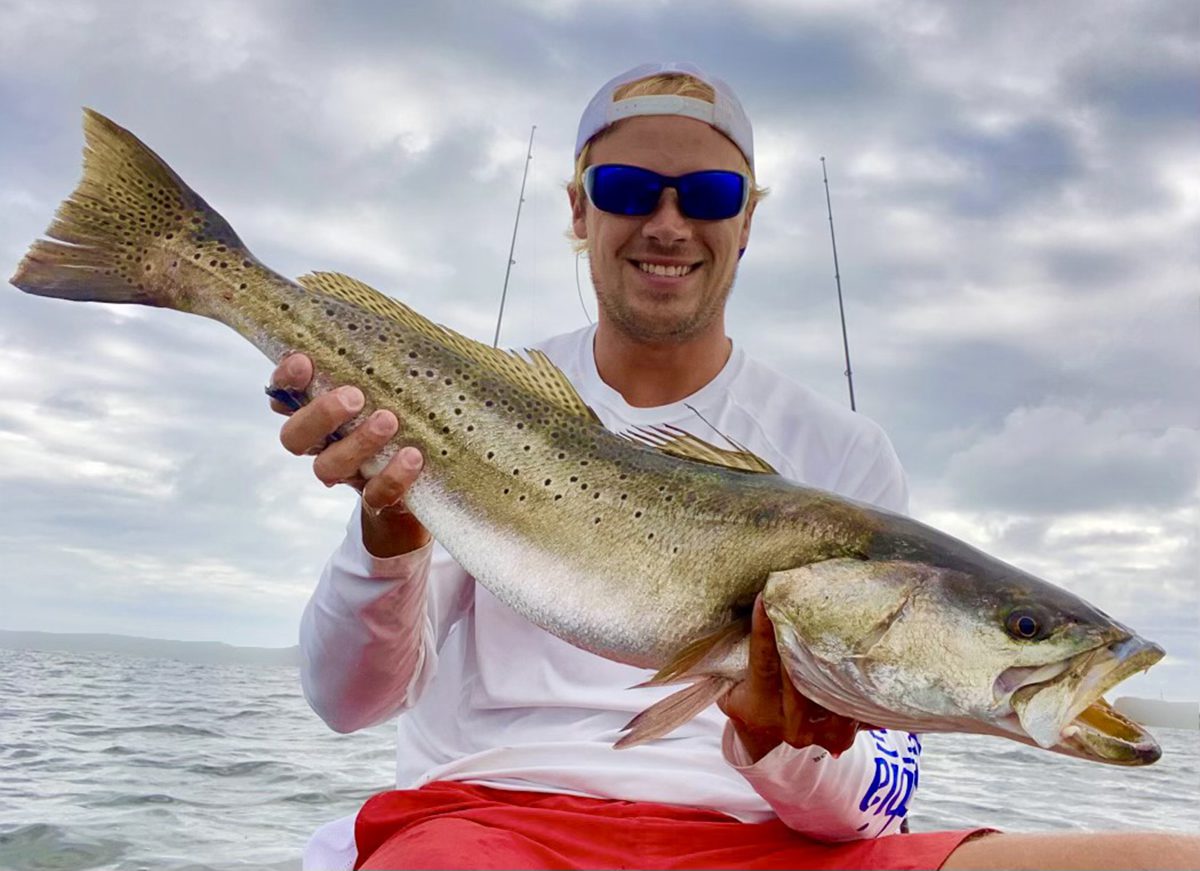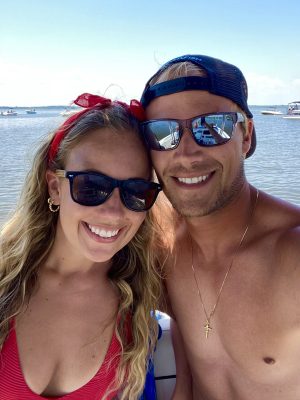
If you’re an angler, you have more than likely at some point in your life been approached by a person with a clipboard in the parking lot of a boat ramp, asking you about your fishing day. What were you fishing for? How long did you stay out? Did you catch anything?
This person is doing what is called a creel survey for the North Carolina Division of Marine Fisheries. The data they collect on recreational fishing data includes effort, catch and participation. It’s important in determining how much pressure is being put on our fish populations by recreational anglers.
Supporter Spotlight
If you have been surveyed in Dare County, there is a good chance that you have been questioned by a good-looking young guy named John Petrigac. He has been living and working on the Outer Banks for five years now.
Along with his girlfriend, Candace Burns, Petrigac gets out on the water as much as he can. And as evidenced by the 30-inch speckled trout he caught this past summer, it appears he’s got some things figured out.
Petrigac grew up in Pittsburgh fishing with his grandfather, also named John. “My grandfather is the reason I started fishing. When I was about 5 years old, he started taking me to a local lake to fish for bass and panfish.”
Of course, this grew into bigger and longer excursions.
“As I got older we would take trips to our family camp in West Virginia where I spent all my time on a boat with him fishing for smallmouth bass,” Petrigac said.
Supporter Spotlight
Petrigac’s grandfather passed away a few years ago but he still impacts young John’s life every day. These idyllic settings would lead to even bigger adventures.
“I got my first taste of saltwater fishing when we took a family vacation to Ocean Isle Beach, North Carolina, and hired an inshore charter that took us out to catch redfish and trout.” The memories of that trip became indelibly stamped into his brain, “I won’t ever forget the first redfish I hooked into,” Petrigac said.

That first red became a turning stone for Petrigac. As with many other people, the saltwater fishing bug got under his skin.
“After that, I made it my goal to move to the coast. It took me a few years, but I eventually moved to Myrtle Beach,” he said.
Petrigac attended Coastal Carolina University where he studied marine science and eventually got his master’s.
“While I was in school, whenever I wasn’t studying or working, I was fishing,” he said.
He worked at a tackle shop in Myrtle Beach and got all the information and knowledge he could.
“For a few summers, I soaked up as much from the locals as I could,” he said.
That knowledge all paid off when John first moved to the Outer Banks. He got his job with the division and decided, just like in college, if he wasn’t working, he was going to be fishing.
“Since I have moved to the Outer Banks, I have been hooked on kayak fishing in my Ascend 12t sit-on-top,” he said.
You will often find him plugging along in the backwaters where he continues to catch speckled trout and red drum.
“I like to spend early mornings on the grass flats chasing trout and drum but will occasionally switch it up and fish structure for sheepshead,” he said.
Like most of us he has preferences in the way he likes to fish but is prepared to switch up when necessary.
“I like to throw topwater as much as I can, but obviously that is not always what the fish want so I’m not afraid to throw a popping cork or weedless jig over grass beds to get bites,” he said.
Petrigac also occasionally gets the opportunity to get out in the ocean. “When asked, I won’t hesitate to jump on a friend’s boat to go bottom fishing for sea bass or look for cobia,” he said, adding that autumn will see him surf fishing. “Come fall, I shift my focus to the surf, for trout and redfish.”

Because Petrigac fishes out of a small craft most of the time and is covering water with a variety of species, he has to be ready for anything.
“The most important thing to having a successful day on the water I think comes down to two things: having a game plan and knowing how and when to adjust your game plan when it doesn’t work out,” he said.
You just never know what each day will bring and not being able to go 30 mph to cover different areas forces an angler to lock down on presentation and finding out what is really going on.
“The key to consistently catching fish is paying attention to weather and environmental conditions and how that affects the fish, as well as having the knowledge about the fish you are targeting,” he said.
If you’re lucky, in a few years you might get a chance to fish with Petrigac. He figures he will end up being a charter captain.
“What good is all this fishing knowledge I am getting, If I don’t pass it on in some way?” he explained.
Petrigac said he will most likely be getting a bay boat so he can really get out and cover water and learn more about the entire Pamlico Sound. He’s looking forward to getting married and having kids in the future so he can pass along his love of fishing to them. Staying in North Carolina and the Outer Banks is pretty much where he sees himself.
“No reason to leave as far as I can see,” he said.
Keep an eye out for Petrigac if you see somebody doing creel surveys in Dare County. He’s a good man to get to know.







